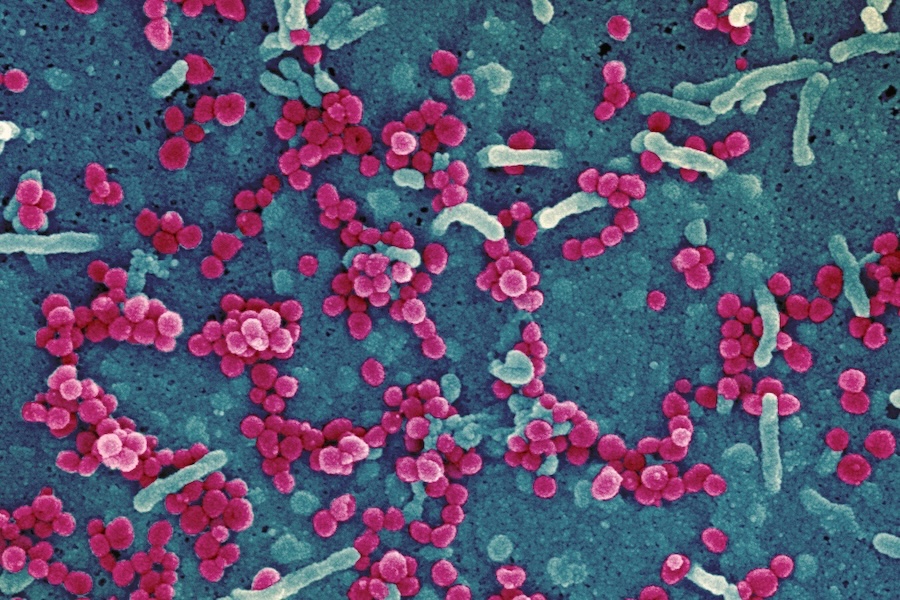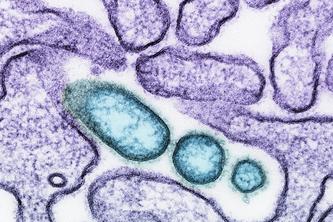
Plan details research priorities for developing diagnostics, therapeutics and vaccines
The Center for Infectious Disease Research and Policy (CIDRAP) at the University of Minnesota released the 2024 Update of a Research and Development (R&D) Roadmap for Lassa Fever to prioritize medical countermeasures—specifically, diagnostics, therapeutics and vaccines—against Lassa fever and provide the framework to ensure these countermeasures are developed and readily available for use in endemic and at-risk areas by the end of the decade. A research paper on the roadmap, "Lassa fever research priorities: towards effective medical countermeasures by the end of the decade," by KA Moore et al., was published in the journal The Lancet Infectious Diseases.
Lassa fever is considered endemic in several West African countries, including Benin, Guinea, Liberia, Mali, Nigeria, and Sierra Leone. Other nearby countries may also be at risk. Each year, an estimated 100,000 to 300,000 Lassa virus (LASV) infections cause 5,000 to 10,000 deaths in the region, but this may be an underestimate. Many previously unrecognized infections and recent surveillance reports noting substantial increases in the number and geographic spread of cases mean the true number of infections and distribution of Lassa fever remains unknown.
“Lassa fever currently occurs only in West Africa, but climate change and other factors could increase the host range of the rodents that carry this virus,” said Michael Osterholm, PhD, MPH, CIDRAP director, University of Minnesota Regents Professor and McKnight Presidential Endowed Chair in Public Health. “As a result, additional areas in Central and East Africa may be at risk over the next few decades. It’s important for us to act now to be sure we have the tools to fight this disease and to prevent further advancement of Lassa fever to new areas.”
The primary source of infections for humans is exposure to droppings and urine from Lassa virus-infected rodents. The Natal multimammate mouse or rat has long been considered the sole natural reservoir of LASV, but additional rodent reservoirs have recently been identified that could contribute to greater risk of LASV spillover to people. Additionally, changes in environmental conditions due to land use and climate change could also lead to a greater risk of spillover, changes in LASV transmission patterns, more frequent Lassa fever outbreaks, and expansion into new areas of Central and East Africa.
The potential for LASV to spread to other areas in Africa highlights the critical need for international cooperation in LASV R&D efforts. Moreover, Lassa fever can be exported to countries outside of Africa and poses a potential risk to other global populations.
The R&D Roadmap includes a set of strategic goals and milestones for generating Lassa fever diagnostics, therapeutics and vaccines. It is based on scientific literature published primarily in the past five years and the consensus opinion of an expert working group with broad experience in public health or the development of Lassa fever diagnostics, therapeutics and/or vaccines.
The 2024 update of the Lassa fever R&D roadmap also highlights the key challenges, barriers and research priorities that need to be addressed to ensure that Lassa fever medical countermeasures are developed and readily available for use in affected areas. The document is organized into four main topic areas: cross-cutting issues, diagnostics, therapeutics, and vaccines.
“By highlighting key research gaps and identifying strategic goals and time-bound milestones, this roadmap will serve as a valuable tool to advance R&D of diagnostics, therapeutics and vaccines to combat Lassa fever,” said Osterholm.
Examples of key milestones that cover the four topic areas include:
- By 2024, establish operational site readiness for conducting multi-country phase 3 clinical trials for vaccines and therapeutics in West Africa.
- By 2024, complete phase 1 clinical trials for at least two of the most promising LASV candidate vaccines.
- By 2025, design and implement plans for expanding and strengthening Lassa fever surveillance, including genomic surveillance.
- By 2026, conduct at least one field validation study in multiple countries of a point-of-care Lassa diagnostic test to evaluate test performance and confirm its usefulness.
- By 2028, complete at least one randomized phase 2/3 clinical efficacy trial involving investigational drugs, host-directed therapies or combination therapies in comparison with ribavirin or the current standard of care.
- By 2028, further investigate optimal antigen targets and configurations for broadly protective LASV vaccines through structural biology research.
- By 2029, bring to market at least one new drug for treating Lassa fever that is affordable, appropriate for use in a variety of healthcare settings and readily available in affected countries.
- By 2028, complete phase 3 clinical efficacy trials for at least one promising LASV vaccine candidate.
- By 2029, obtain regulatory approval for at least one LASV vaccine that can be used in children and other high-risk groups, and is aligned with the target product profile for use in Lassa fever endemic and at-risk areas.
Additionally, five critical overarching areas that need ongoing attention and resources include:
- Ensuring availability of funding for preclinical and translational research to move Lassa fever medical countermeasures forward;
- Ensuring adequate funding for Lassa fever surveillance and control in endemic and nearby areas;
- Improving subregional coordination and standardization to allow generation of clinical data that are comparable across different sites;
- Developing strategies to promote ongoing engagement with affected communities to ensure that clinical research sites can be maintained over time with adequate participation from community members; and
- Improving regional workforce capacity and infrastructure through ongoing engagement and commitment from local and regional governments.
“A lot of important work is being done to advance medical countermeasures against Lassa fever, but we need to continue that work to ensure that diagnostic tests, drugs and vaccines are available by the end of the decade,” added Osterholm.
Support for the 2024 Update of the Lassa Fever R&D Roadmap was provided by the Wellcome Trust.
About the Center for Infectious Disease Research and Policy
Part of the University of Minnesota's Research and Innovation Office, CIDRAP is a global leader in addressing public health preparedness and emerging infectious disease response. Founded in 2001, CIDRAP works to prevent illness and death from targeted infectious disease threats through research and the translation of scientific information into practical applications, policies and solutions.
- Categories:
- Health
- Infectious diseases
- Population health





